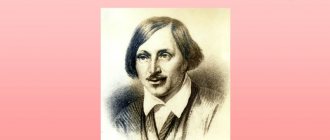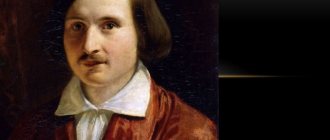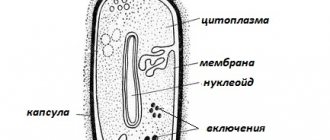A generalization lesson based on the story by N.V. Gogol "Taras Bulba" 7th grade
A generalization lesson based on N.V. Gogol’s story “Taras Bulba”. Taras Bulba is a national hero.
The purpose of the lesson: to develop in students the ability to analyze a literary work and a literary image, to cultivate in children a sense of patriotism, collectivism, and friendship.
Epigraph of the lesson: “Are there really such fires, torments and such strength in the world that would overpower the Russian force”! N.V.Gogol.
During the classes.
Guys, I want to start my lesson with a parable about loneliness. “One day a young man came to a sage and asked him how to save himself from loneliness.
“I will save you from loneliness, but first you must pass a three-day test.” The young man agreed. On the first day, the sage tightly blindfolded the young man so that he could not see anything. It was unbearably difficult, especially when the young man was asked to bring something. The next day, the sage tightly closed the young man’s ears so that he would not hear anything. It seemed to the young man that the whole world around him seemed to have gone deaf. On the third day, the sage locked the young man in a small room without windows or light for the whole day. Finally, all the trials were over, and the young man exclaimed: “How glad I am that I survived everything!” Now will you help me? - Do you still feel lonely? — Frankly speaking, no. The world is so beautiful. I had no idea that there were so many sounds and colors around. – As long as a person can look at the sun, moon, stars and enjoy the gifts of the earth and sea, he is not alone.
Let's find a cure for loneliness and start working. Dear guys, we have finished working on N.V. Gogol’s story “Taras Bulba”. It remains for us to consider the image of the main character of the work; the writer named his story after him. Who is Taras Bulba, how he lived, how this hero died.
2.Work on the image of the hero of the story.
— How did we see Taras Bulba at the beginning of the story? What did he look like? How does he behave when meeting his sons? How does he treat his wife? What does his appearance say? Describe her. – Why does Taras Bulba change his mind so quickly and go to the Zaporozhye Sich the next day?
3. Filling out the table. What character traits does Taras Bulba display in these episodes?
8. The moment of capture. Scene of Taras's death
Bulbs.
— Taras rejoiced at the success of his sons, but was still dissatisfied with the life of the Zaporozhye Sich. Why? What did he dream about? *A more accurate description of our hero will be given by his speech about camaraderie. *Reading a speech about partnership. – Which phrase contains the main idea of Taras Bulba? (There is no bond holier than fellowship). – How do you understand partnership? (Students' opinions). Teacher: Partnership is a reliable foundation of friendship. This is a noble feeling. The feeling of camaraderie originated in ancient times, when people needed mutual assistance to survive, overcome hunger, cold, and disease. The concept of “partnership” did not always have its current meaning. For example, in the 17th century the word “comrade” meant “comrade-in-arms.” At all times, military camaraderie was especially valued. During the Great Patriotic War, it largely predetermined the victory of our people over the Nazi invaders. It is about military camaraderie that Taras Bulba speaks. Camaraderie and friendship are amazing relationships that arise between people. – What do you think about camaraderie, friendship, friend? (Reading student essays).
“Friendship is a relationship between people that anyone can create. People who have best friends consider themselves the happiest people on earth. We can share secrets and joys with friends. When we face difficulties, only true friends will come to the rescue to help and support us. No one can feel lonely if he is surrounded by true friends. Loneliness reigns in the lives of those people who have no friends. It is true what they say: friends are made in adversity. There are real and false friends. The real ones are always on your side, even if trouble happens to you. False friends are unlikely to help you in difficult times. We must avoid such people. Every person should have at least one, but the closest friend.” (Kochneva Yulia).
— What is partnership for Taras? — How does Taras Bulba’s speech characterize him? Teacher: The unity of Taras with the Cossacks is manifested in the struggle for their homeland. – In what episodes did Taras’ talent as a commander manifest itself? (Last battle near Dubno). - How did Taras, the colonel, behave during the battle? What phrases does he use to encourage his fellow Cossacks? Teacher: Let's look at the image of Taras - the father? Execution of sons. *View a fragment from the film “Taras Bulba”. Execution of Andriy. – How does Taras feel about Andriy? *Fragment of Ostap’s execution. Presence of Taras at the execution. – Did Ostap’s death affect the future fate of Taras? — How did Hetman Pototsky manage to capture Taras? * Fragment “The Death of Taras”. – Can Taras’s death be called heroic? Why? Teacher: Gogol led his hero through terrible trials and showed that a person can be hardened, made lonely and unhappy, knowing no rest from suffering, but he cannot be broken, bent if he serves a common cause, if he fights for freedom, defends the Motherland.
— Why do we call Taras a folk hero? * Task: create a cluster. What words - epithets can describe Taras Bulba?
*Test tasks.
1. Indicate the years of N.V. Gogol’s life. a) 1799 – 1837 b) 1809 – 1852 c) 1831 – 1895 d) 1821 – 1881.
2.What genre does the work “Taras Bulba” belong to? a) story b) novel c) short story d) poem.
3.Who owns the words: “Be patient, Cossack, you will be an ataman!”, “There is still gunpowder in the flasks!”? a) Andriy b) Taras Bulba c) Ostap d) Kuren chieftain.
4.Where does the action take place in the work? a) in Poland b) in Russia c) in Ukraine d) in Belarus.
5.Who gave the speech about partnership? A) Ostap b) Taras Bulba c) Andriy d) Stepan Guska.
6.What is the name of the technique used in the work? “The steppe became more beautiful the further it went... Through the thin, tall stems of grass, blue, blue and purple hairs showed through; yellow gorse jumped up with its pyramidal top; white porridge dotted the surface with umbrella-shaped caps; the ear of wheat brought from God knows where was pouring into the thicket.” A) landscape b) portrait c) interior d) detail.
7. Why was Taras Bulba captured? What did he not want to leave on enemy soil? A) horse b) saber c) cradle - smoking pipe. d) caftan.
8.Indicate the reason for Andriy’s betrayal. A) reluctance to fight b) quarrel with father c) desire for glory d) love for a beautiful lady.
9.What was the meaning of Taras’ life? A) in a happy family life b) in raising sons c) in serving the Motherland and protecting it from enemies d) remembering the traditions and customs of the Zaporozhye Sich.
10.What problem is raised in N.V. Gogol’s story? a) the problem of betrayal b) the problem of love c) the problem of camaraderie and friendship d) the problem of personality and power.
*Final words from the teacher. Reflection.
In his work, the writer shows the national liberation movement, which consisted in “national character and significance, in the mass character of the uprisings. Who led the Polish magnates and gentry into confusion, in the selfless struggle of the Ukrainian Cossacks and peasants against foreign oppressors.” We find the people's heroic feat in the tragic fate of Taras Bulba. For the Russian land to prosper forever, so that the “basic law of partnership” is sacredly observed - this is the feat of Taras Bulba. Heroes do not die, they acquire immortality, because they are convinced that “not a single great deed will be lost.”
*Homework: prepare for your essay.
*Summarizing. Grading.



